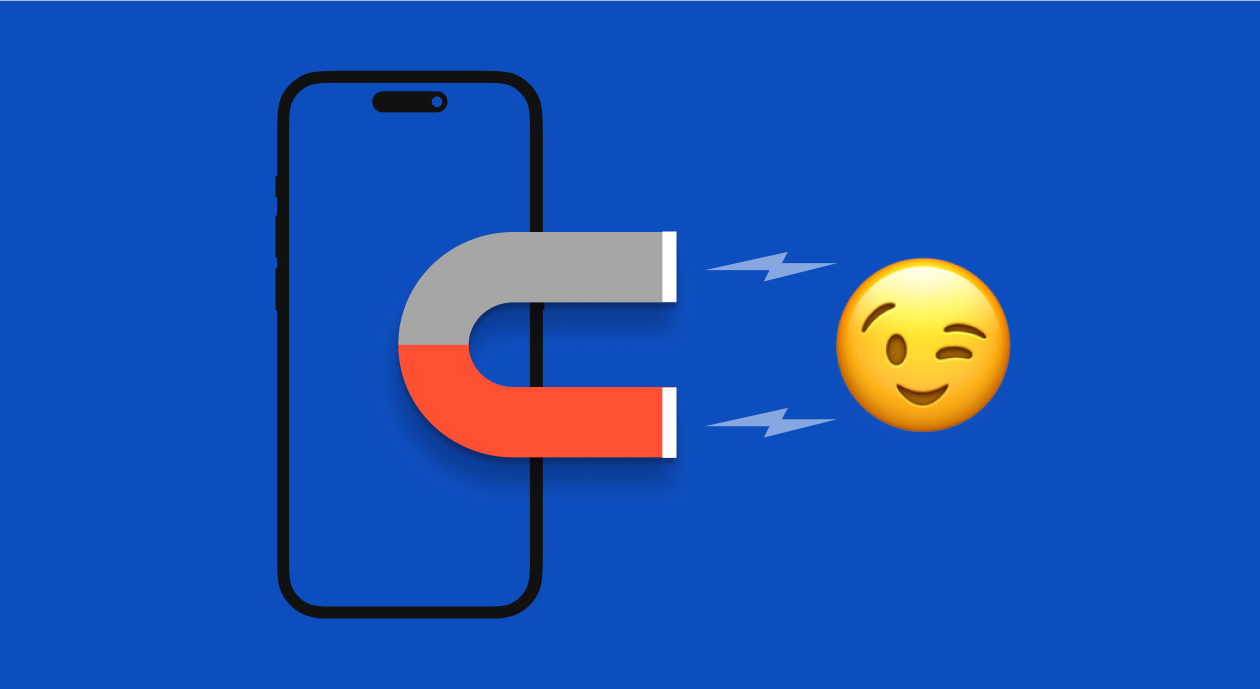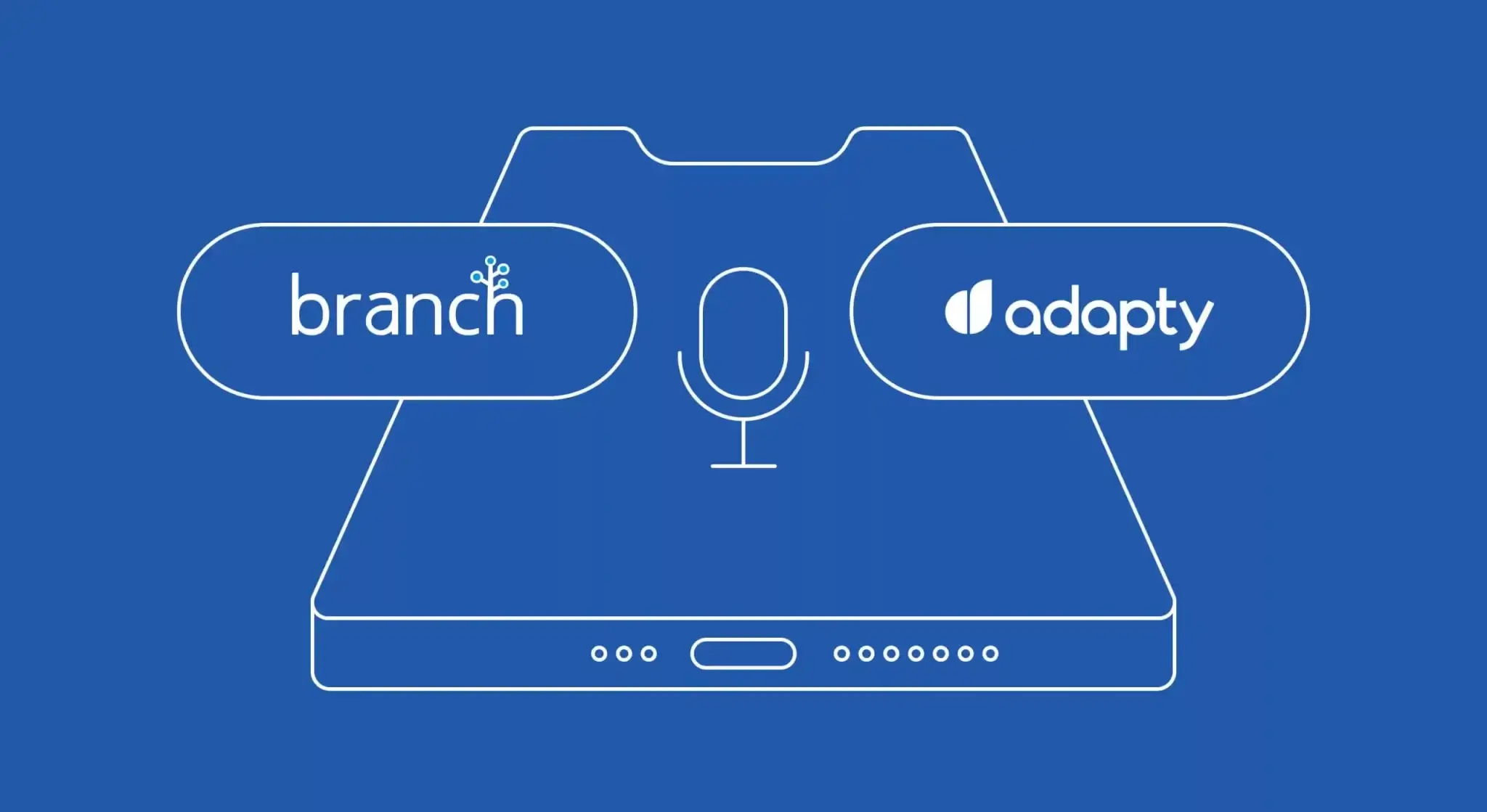How to increase app engagement in 2024?

Updated: July 26, 2024
22 min read

Having a lot of downloads doesn’t mean as much as it used to. App downloads don’t guarantee that the user will enjoy your app, purchase any premium feature, leave a positive review, or even use the app at all! Your app could end up being an untouched icon for all you know…
Today, the smarter app developers are fixated on getting their app engagement higher— 2024 being the best time to do it so far!
So this time around, let’s talk app engagement. What does the term mean for app developers and marketers? Why should you care about app engagement? How should you get your app engagement up, and how do you know if you’ve succeeded? Let’s tackle all these questions and more!
What is app engagement?
App engagement refers to the level of interaction and involvement that a user has with a mobile app over a specific period. It’s a crucial metric for assessing the success and effectiveness of an application. App engagement goes beyond increasing app downloads and installations, focusing on the depth of user interaction and the overall user experience.
Several key aspects drive app engagement:
- Time spent on the mobile apps: The more time users actively invest in the app, the higher the engagement level.
- Frequency of use: How often users open and interact with the app is another significant factor. Apps that are used regularly demonstrate stronger engagement.
- Feature interaction: The extent to which users explore and use various features within the app. Active engagement involves more than just opening the app; it includes interacting with its functionalities.
- User feedback and ratings: Feedback, reviews, and ratings provided by users are indirect indicators of engagement. Positive feedback often correlates with a higher level of engagement.
- Social sharing and referrals: Users sharing content or recommending the app to others contribute to increased engagement and user acquisition.
Why increasing app engagement is important?
High app engagement is one of the top dreams any app developer has when they launch a new app. But why is it considered so important and is there any truth to it? Here are 5 reasons why increasing app engagement is important now more than ever:
1. Improves user retention
High app engagement is directly linked to improved user retention. An average app loses 77% of its daily active users (DAU) within the first 3 days of download. The reason? A lack of user retention which makes up for poor app engagement!
When users regularly interact with and find value in an app, they are more likely to continue using it over the long term. This sustained engagement helps build a loyal user base, reducing churn rates and ensuring the app remains relevant in the competitive market.
2. Enhances revenue potential
Increasing app engagement translates into higher revenue potential. Engaged users are more likely to make in-app purchases, subscribe to premium features, or interact with advertisements. If your goal is to make money, you’ll have to focus on getting active app users one day or the other!
3. Elevates user satisfaction
When users have a positive and fulfilling experience with an app, their satisfaction levels increase. The more satisfied they are with your app, the higher the app engagement you’ve achieved!
They enjoy their experience within the app, which trickles down favorably for you in 2 unique ways:
- More and more users will rate and review positively, leading to higher app ratings, and
- Your app garners a positive reputation and will be encouraging user loyalty and positive word-of-mouth referrals.
4. Serves as a key indicator of app health
App engagement is a critical indicator of an app’s overall health and success. Monitoring engagement metrics provides valuable insights into how users interact with different features, helping you identify areas for improvement.
By understanding user behavior, you can make informed and data-driven decisions, implement necessary updates, and ensure the app remains competitive and adaptive to evolving user preferences.
5. Has a positive impact on organic growth
High app engagement has a positive ripple effect on organic growth. Engaged users are more likely to share their positive experiences with others, leading to increased word-of-mouth recommendations.
Driven by satisfied users, this organic growth can significantly expand the app’s user base without relying solely on marketing efforts. Talk about a broader and more sustainable audience reach!
How to develop a mobile app engagement strategy?
Not sure where to start when it comes to your app engagement strategy? Wondering how to kick-start the whole thing?
There are 4 steps you need to take to develop the right mobile app engagement strategy for yourself. Starting with…
1. Understanding the target audience
To create an effective engagement strategy, start by understanding your target audience. You can’t target your group of people if you don’t know who they are or what they want. So, I recommend that you conduct thorough research to identify the demographics, preferences, and behaviors of your potential users.
Analyzing this information enables you to tailor your app’s features, design, and communication to resonate with the specific needs of your audience. Who are they? What problem do they have? What are they looking for? How can my app make them happier?
For example, if your app targets young professionals, your engagement strategy might prioritize sleek design and time-saving features that align with their busy lifestyles. On the other hand, if your app’s target audience is children aged 7–13, you’ll want to incorporate bold color combinations and an exciting UI!
2. Setting clear objectives
Define specific and measurable engagement goals to guide your strategy effectively. This involves not only attracting new users but also retaining and re-engaging existing ones.
Setting clear objectives can look different for every app, depending on who it targets and what it was made for. Some of these objectives can be:
- Increasing active users,
- improving session duration, or
- Boosting in-app purchases.
Having well-defined goals ensures that your engagement efforts align with the overarching success of your app. For instance, if your goal is to increase in-app purchases, your strategy might involve offering special promotions to encourage users to make purchases within the app.
3. Strong and aligned marketing strategy
Successful apps with high engagement have one thing in common. They have an excellently targeted marketing strategy. Marketing strategy helps your app be discovered, liked, and known in the space of your target audience, leading to a positive impact on almost every aspect of the app!
Yet, it’s often an overlooked aspect of app management. If you want an engaged app, implement a mobile app campaign strategy as well as a public relations campaign (PR campaigns for short) that aligns with the platforms where your users are present.
Utilize app store optimization (ASO) techniques to enhance your app’s visibility in app stores. Additionally, consider a well-executed app launch campaign to generate buzz and attract initial users.
Aligning your marketing efforts with your audience’s preferred platforms ensures that your app gains traction where it matters most. For example, if your target audience is highly active on social media, incorporating a PR campaign through these channels can significantly boost app visibility.
4. Incorporating feedback loops
You can’t get your app development strategy right unless you’re actively collecting and listening to feedback. Encourage users to provide feedback within the app, whether through surveys, reviews, or direct communication channels.
Use this feedback to refine your app features, address pain points, and enhance the overall user experience. A continuous feedback loop ensures that your app remains responsive to user needs, contributing to a more successful app.
For instance, if users consistently mention a specific issue in their feedback, promptly address and resolve it to show your commitment to a positive user experience, which ultimately leads to increased engagement.
But these 4 aspects aren’t the only thing that you need to make a killer app engagement strategy…
12 strategies to increase app engagement
Without these strategies set in place, app engagement rates might not come off as strong as you’d expect. But the good news is that these strategies aren’t rocket science!
With some effort, it’s easy and worthwhile to implement these 12 strategies to increase app engagement. And don’t worry, I’ve got plenty of real-world examples below to show you just what I mean!
Personalize user experience
Creating a personalized user experience is crucial for increasing engagement metrics. By leveraging user data, apps can customize content, recommendations, and functionalities.
For example, Duolingo personalizes language lessons based on the user’s proficiency level, preferences, and learning pace. This tailored approach not only enhances user satisfaction but also contributes to prolonged user interaction.
Remember, the more personalized the learning experience, the more likely users are to stay engaged and committed to their language-learning journey.
Improve app onboarding
The initial onboarding experience plays a vital role in user acquisition and engagement. A clear onboarding process helps users understand the app’s core features and reduces the chances of the user being confused— ultimately ignoring the app in the long run.
A well-designed onboarding process also educates users about key features and demonstrates the app’s value. This is especially important if your app is detailed and can offer deeper value than at first glance!
The fitness app MyFitnessPal effectively uses onboarding by guiding users to set fitness goals and providing a quick tutorial on tracking meals. A seamless onboarding experience also contributes to increased user satisfaction, setting the stage for long-term engagement.
Implement push notifications wisely
Push notifications are a little nudge from your app, saying, “Hey, I’m still installed on your phone and I’ve got something that might interest you!” That’s exactly why push notifications are one of the best strategies to increase your app engagement.
Not only can these notifications remind an inactive user that your app is valuable, but they can also do so without overwhelming the user. For instance, a news app like Flipboard sends personalized notifications based on the user’s interests and reading habits.
Implementing personalized, timely, and non-intrusive push notifications ensures user engagement and creates a positive experience. By delivering relevant information at the right time, push notifications can be a powerful tool to keep users informed and engaged!
Offer incentives and rewards
Have you ever fallen into a Candy Crush trap? The one where they offer you unlimited lives for the next 2 hours? Or the one where they give you special candies for a limited time? That’s the app developers using rewards and incentives as a way to build engagement.
Incentive programs where users receive rewards for completing levels, can motivate users to engage more frequently. This strategy not only boosts user satisfaction but also contributes to user loyalty!
Tailoring incentives to the app’s audience ensures that rewards resonate with users, encouraging continued engagement. Incentives create a sense of accomplishment and progression, prompting users to return regularly to achieve and collect rewards.
Optimize app performance
A fast, smooth, and reliable app experience is fundamental for user satisfaction and engagement. Regularly optimizing load times, fixing bugs promptly, and providing updates contribute to a positive user experience.
An optimized app performance not only attracts new app users but also ensures the retention of existing users. Plus, you’re more likely to engage with an app that offers a seamless experience, without glitches or delays.
Leverage in-app messaging
In-app messaging serves as a valuable tool to guide, inform, and engage users within the app. For instance, WhatsApp uses in-app messaging for feature announcements, ensuring users are aware of new functionalities. It’s easy, informative and effective.
In-app messages can act as a direct communication channel, providing users with important updates, tips, or personalized recommendations.
Utilize gamification techniques
There’s perhaps no greater example of gamification today than Duolingo and that’s exactly who we’re going to learn from. Duolingo’s success draws mainly from the way it handled language learning through gamification strategies.
From daily challenges to gem rewards and a leadership scoreboard to track your success against other global users, Duolingo implemented every gamification element that makes an app engaging and enjoyable. It converted something as complex as learning a language into a competitive yet fun and rewarding game, becoming the best language app that exists.
Gamification fosters user interaction, competition, and a sense of achievement, leading to sustained engagement over time. Users are motivated to progress through the app by completing challenges, earning points, or achieving higher levels, making the learning process more enjoyable and encouraging consistent use.
Regularly update content
Keeping app content fresh and updated is vital for sustaining user interest. Regular updates to introduce new features, filters, or interactive elements give users a reason to revisit and engage with your app.
Fresh content contributes to increased user satisfaction and loyalty. Users are more likely to remain engaged when they anticipate new and exciting content, whether it’s new photo filters, additional features, or fresh challenges.
Encourage social sharing
Integrated social sharing features are available on almost every major app on your phone. From Candy Crush and Instagram to Google Maps and Canva, social sharing is a secret that can unlock app engagement for your app too! It allows users to share their app experiences with their network.
Encouraging users to share content, achievements, or results also increases app visibility! Social sharing turns app usage into a social experience, as users share their achievements, experiences, or favorite content with friends and followers, enhancing overall engagement.
This way you let your users do some part of your marketing strategy free of cost!
Focus on customer support and feedback
Who would’ve thought that listening to users and providing prompt, helpful customer support is exactly what you need for user satisfaction and loyalty? Everyone, that’s who!
When you listen to what your users have to say, you can improve your app in a way that will have the highest positive impact on your users. What they see is that the developers are actively listening and improving their experiences.
Positive interactions with customer support can enhance user satisfaction, while actively addressing feedback and concerns can lead to app improvements that resonate with user expectations. A win-win in all books!
Create a community around the app
Community building can be one of the overlooked aspects of app engagement, but it works wonders. Just to show you by example, Strava is a fitness app with 95 million active users. How did they achieve that?
Strava created a community by letting its users share their workout achievements and connect with other fitness enthusiasts. It became a niche form of social media for fitness folks to discuss, share, and support each other’s experiences.
Hence, they attracted and retained beginners who wanted to share minor milestones and ask for help whenever they needed it. Meanwhile, experts and intermediate users also shared their own experiences with others and helped in community discussions. All of this resulted in each user finding the app thoroughly engaging.
Integrate analytics to understand users
Any strategy without analytics isn’t a real strategy. Implementing analytics tools is essential for understanding user behavior and engagement patterns. After all, they lead to data-driven decisions about app updates and engagement strategies.
Speaking of analytics, it’s time to talk about…
2024 subscription benchmarks and insights
Get your free copy of our latest subscription report to stay ahead in 2024.
How to measure app engagement
The word app engagement might seem like a qualitative feature that can’t be expressed in numbers. But did you know that you actually can measure app engagement and work with numbers to improve the score?
Before we get to the how, I’m sure you want me to answer the why. Why should you measure app engagement?
Here are 8 key reasons why measuring app engagement is crucial:
- Identify areas for improvement in user interface, features, and app experience,
- Understand how well mobile apps campaign strategy resonates with users,
- Evaluate if users find value in your app and are satisfied with their experience,
- Measure the app’s ability to retain users over time,
- Assess how ‘sticky’ your app is for its users,
- Evaluate the success of your app launch campaign and app store optimization efforts,
- Ensure your app aligns with user expectations to build a loyal user base, and
- Encourage users to interact with key features, promoting a positive user journey.
So, measuring app engagement is nothing less than paramount to your app’s success. Now, I’ll tell you 4 metrics you should be measuring to get your app engagement in numbers!
Daily/monthly active users
Daily Active Users (DAU) and Monthly Active Users (MAU) are foundational metrics that provide real-time and broader usage insights, respectively. DAU signifies the number of users engaging with the app daily, reflecting the immediate impact of updates or features.
On the other hand, MAU offers a more extended view, enabling you to identify trends and evaluate the success of long-term engagement strategies. You can even use MAU patterns to recognize app seasonality and plan how to peak during your app’s seasonal periods!
Tracking these metrics helps app developers:
- identify trends,
- refine their engagement strategies, and
- measure the impact of app updates or features!
User retention rate
If you want to understand how well your app sustains user interest, you’ll want to look into user retention rates. Represented as a percentage of users returning after their initial visit, a high retention rate signifies user satisfaction and effective engagement strategies. And a low rate, of course, means your app is barely able to hold onto the attention it gets!
This metric delves into the app’s capacity not just to attract users initially but to provide an ongoing, compelling experience that fosters loyalty and repeated interactions.
Churn rate
The churn rate is expressed as the percentage of users who stop using the app within a specific timeframe. This rate will help you understand user satisfaction and app stickiness — how often your users come back to your app.
A low churn rate indicates a strong user base, while a high rate may signal problems requiring attention. Analyzing churn patterns helps you refine engagement strategies and address user concerns, making it a vital KPI to use!
Customer engagement score
Customer Engagement Score introduces a holistic approach by combining various engagement indicators. This composite metric considers factors such as DAU, user retention, in app purchases, and personalized push notifications to provide a comprehensive view of user engagement and satisfaction.
It acts as a strategic tool, guiding developers to make informed and data-driven decisions and adjustments based on a more nuanced understanding of how users interact with the app.
This approach ensures a well-rounded and user-centric perspective, which is exactly what you need if you want to sustain success in a volatile app industry!
Final Thoughts
And there we have it! Increasing app engagement is something every app developer wishes for, but achieving that successfully is a feat only a few have proven to do. If it’s on your wishlist too, incorporate the 12 strategies to increase app engagement into your PR campaign strategy and enjoy a holistic and effective approach to attract, retain, and continually engage your user base.
Recommended posts

Product-releases
3 min read
September 13, 2023





